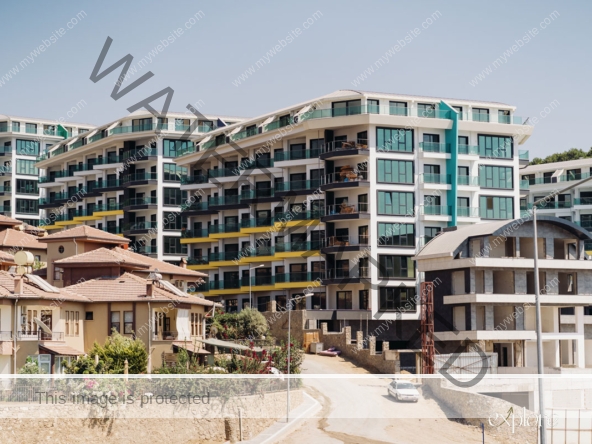Purchasing a home is one of the most significant financial decisions you will make in your lifetime. In Malaysia, the journey to homeownership can be both exciting and challenging, especially when it comes to financing your dream home. Understanding the various mortgage options, loan eligibility criteria, and the home loan application process is essential. We will guide you through these aspects, offering valuable tips on saving for a down payment and managing your finances for homeownership in Malaysia.
Understanding Mortgage Options
When it comes to financing your home, there are several mortgage options available in Malaysia. Each option has its unique features, benefits, and eligibility criteria. Here are some of the most common types of home loans:
- Conventional Loans: These are traditional home loans offered by banks and financial institutions. Borrowers typically need to make a down payment of 10% to 20% of the property’s value. Conventional loans usually have fixed or variable interest rates, and the loan tenure can range from 10 to 35 years.
- Islamic Financing: For those who prefer Sharia-compliant financing, Islamic home loans are an excellent option. These loans operate on the principle of profit-sharing rather than interest. Common Islamic financing products include Murabaha (cost-plus financing) and Ijarah (leasing). The down payment and loan tenure requirements are similar to conventional loans.
- Step-Up Financing: This option is designed for middle-income earners who may find it challenging to manage high initial monthly payments. Step-up financing allows borrowers to start with lower monthly installments that gradually increase over time. This can be particularly beneficial for first-time homebuyers who expect their income to rise in the coming years.
- Rent-to-Own Schemes: This innovative financing option allows buyers to rent a property with the intention of purchasing it later. A portion of the rent paid can be credited toward the down payment. This scheme is particularly useful for those who may not have enough savings for a down payment at the outset.
- Government Schemes: The Malaysian government offers various housing schemes to assist first-time homebuyers, such as the My First Home Scheme (MFHS) and the PR1MA initiative. These programs often provide lower down payment requirements and favorable loan terms.

Loan Eligibility Criteria
Before applying for a home loan, it’s crucial to understand the eligibility criteria set by banks and financial institutions. While specific requirements may vary, the following factors are generally considered:
- Income Level: Your monthly income plays a significant role in determining your loan eligibility. Most banks require a minimum income level, typically ranging from RM3,000 to RM5,000 per month, depending on the loan amount.
- Credit Score: A good credit score is essential for securing a home loan. Lenders assess your credit history to evaluate your creditworthiness. A score above 650 is generally considered favorable, while a score below this may limit your financing options.
- Debt-to-Income Ratio (DTI): This ratio measures your monthly debt payments compared to your gross monthly income. Most lenders prefer a DTI ratio below 40%, which indicates that you are not over-leveraged and can manage additional debt.
- Employment Stability: Lenders prefer borrowers with stable employment histories. A minimum of two years in the same job or industry is often required to demonstrate job stability.
- Age: Most banks have age limits for borrowers, typically requiring applicants to be at least 18 years old and not older than 70 years by the end of the loan tenure.

The Home Loan Application Process
Navigating the home loan application process can seem daunting, but understanding the steps involved can make it more manageable. Here’s a breakdown of the typical process:
- Pre-Approval: Before house hunting, consider getting pre-approved for a mortgage. This involves submitting your financial information to a lender, who will assess your eligibility and provide an estimate of how much you can borrow. Pre-approval gives you a clear budget and strengthens your position when making an offer on a property.
- Choosing a Lender: Research various banks and financial institutions to find the best mortgage rates and terms. Compare interest rates, fees, and customer service to select a lender that meets your needs.
- Submitting an Application: Once you find a property, submit a formal loan application to your chosen lender. This typically requires documentation such as proof of income, identification, bank statements, and details about the property you intend to purchase.
- Loan Processing: After submitting your application, the lender will conduct a thorough assessment, including verifying your financial information and evaluating the property’s value through an appraisal.
- Approval and Offer: If your application is approved, the lender will issue a loan offer outlining the terms and conditions. Review this carefully and consult with a financial advisor if needed.
- Signing the Agreement: Once you accept the loan offer, you will need to sign the loan agreement. Be sure to understand all terms, including interest rates, repayment schedules, and any penalties for early repayment.
- Disbursement of Funds: After signing the agreement, the lender will disburse the loan amount to the seller or developer, completing the purchase process.

Saving for a Down Payment
One of the most significant hurdles to homeownership is saving for a down payment. In Malaysia, the typical down payment requirement for first-time homebuyers ranges from 10% to 20% of the property’s price. Here are some tips to help you save effectively:
- Set a Savings Goal: Determine the amount you need for a down payment based on the property price you are targeting. Set a realistic timeline for achieving this goal.
- Create a Budget: Analyze your monthly expenses and identify areas where you can cut back. Allocate a specific amount each month toward your down payment savings.
- Open a Dedicated Savings Account: Consider opening a separate savings account specifically for your down payment. This can help you track your progress and avoid spending the funds on other expenses.
- Automate Your Savings: Set up automatic transfers from your checking account to your down payment savings account. This ensures you consistently contribute to your savings goal without having to think about it.
- Explore Government Schemes: Take advantage of any government programs or incentives designed to assist first-time homebuyers in saving for a down payment.
- Consider Additional Income Sources: Look for opportunities to increase your income, such as freelance work, part-time jobs, or selling unused items. Use this extra income to boost your down payment savings.

Managing Finances for Homeownership
Once you secure a home loan, managing your finances effectively is crucial for successful homeownership. Here are some tips to help you stay on track:
- Create a Monthly Budget: Develop a comprehensive budget that includes your mortgage payment, property taxes, insurance, utilities, and maintenance costs. This will help you understand your financial obligations and avoid overspending.
- Build an Emergency Fund: Set aside funds for unexpected expenses, such as home repairs or medical emergencies. A good rule of thumb is to aim for three to six months’ worth of living expenses.
- Monitor Your Credit Score: Keep an eye on your credit score and take steps to improve it if necessary. A higher credit score can lead to better loan terms and lower interest rates in the future.
- Stay Informed About Interest Rates: Keep track of interest rate trends and consider refinancing your mortgage if rates drop significantly. This can save you money over the long term.
- Seek Professional Advice: Consult with financial advisors or mortgage specialists to ensure you make informed decisions about your home loan and overall financial strategy.

Final Thoughts
Financing your dream home in Malaysia requires careful planning, research, and financial discipline. By understanding the various mortgage options, loan eligibility criteria, and the home loan application process, you can navigate the path to homeownership with confidence. Additionally, implementing effective savings strategies and managing your finances will set you up for long-term success as a homeowner. With the right approach, you can turn your dream of owning a home into a reality.ce.





